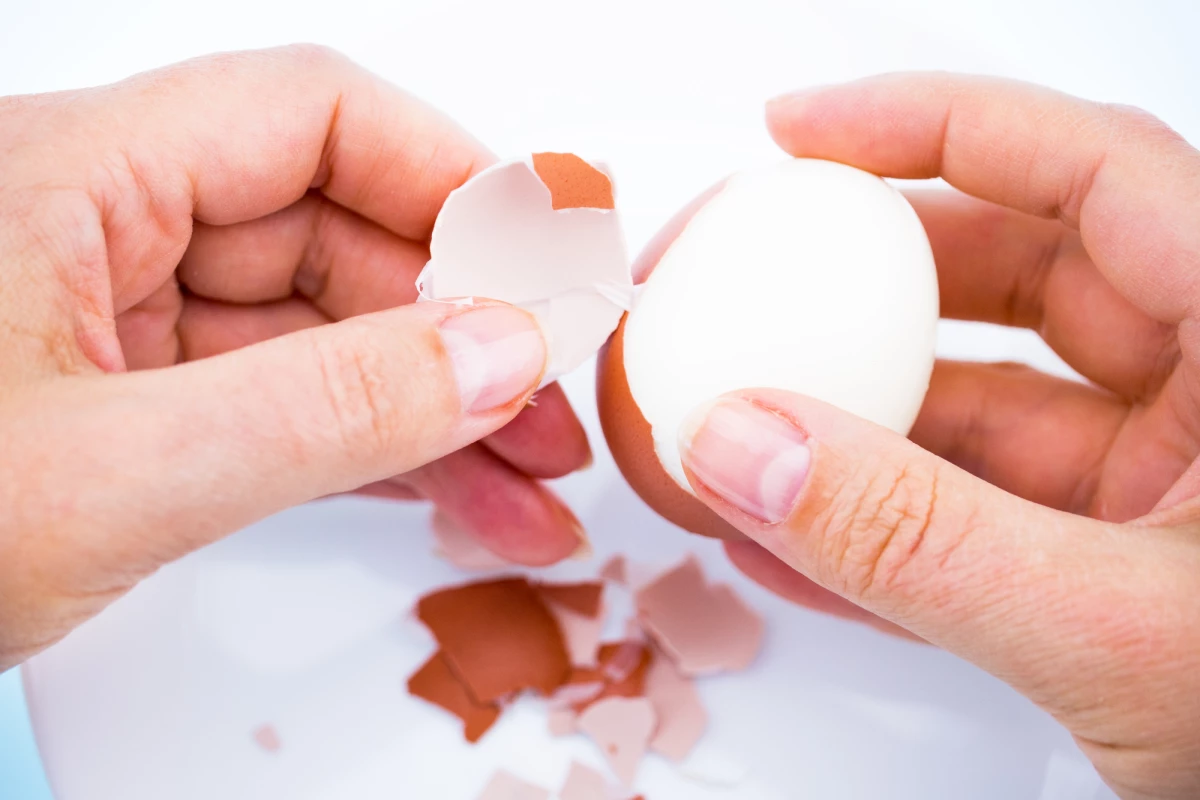Researchers have examined how a chicken egg develops its hard outer shell, anchored securely to a soft inner membrane, and believe the insights have the potential to improve reconstructive surgeries like the repair of torn ligaments, where surgeons are required to integrate soft and hard materials.
Bird eggshells are pretty incredible, taking only 20 hours for a fully formed, highly organized and calcified structure to be produced from a bundle of organic fibers. The hard shell performs a protective function, but it’s tethered to a wet, fibrous membrane inside the egg that contributes to its strength. (You can see the thin inner membrane when you peel the shell from a hard-boiled egg.)
Now, researchers from McGill University in Canada have used advanced imaging techniques to examine how the soft egg membrane is anchored to the hard shell, hoping to use that information to improve surgical reconstructive procedures that require the attachment of soft, wet fibers to hard materials.
“Until now, no one had considered how this interface between these two very dissimilar substances, one a hard biorock, and the other a soft fibrous membrane, might be secured at the nanoscale,” said Marc McKee, the study’s corresponding author. “What we found [out] about this soft-hard interface is quite remarkable.”
Athletes who undergo surgery to repair torn ligaments, particularly the anterior cruciate ligament or ACL, often have to have further surgery because the reattachment fails. Such is the difficulty surgeons face when fastening something soft to something hard.
Examining chicken eggs, the researchers found that at a stage in egg development, before laying, the shell sends mineral nanospikes into the soft, compliant surface fibers of the underlying membrane that surrounds the egg’s contents, whether that be an egg white and yolk or a developing chick embryo.
The nanospikes sent from the shell into the membrane substantially increase the surface area of the interface between the materials, anchoring and securing the soft to the hard to prevent slipping and sliding of the fibers within the shell. It’s a preservation method: membrane detachment can be lethal for the growing embryo, can weaken the shell, and/or can allow pathogens into the egg.
The researchers believe that their new-found understanding of the eggshell-membrane interface could lead to new engineered, hybrid composite materials incorporating the mineral nanospike design and new procedures to improve the outcome of medical and dental reconstructive surgeries.
The study was published in the journal iScience.
Source: McGill University





